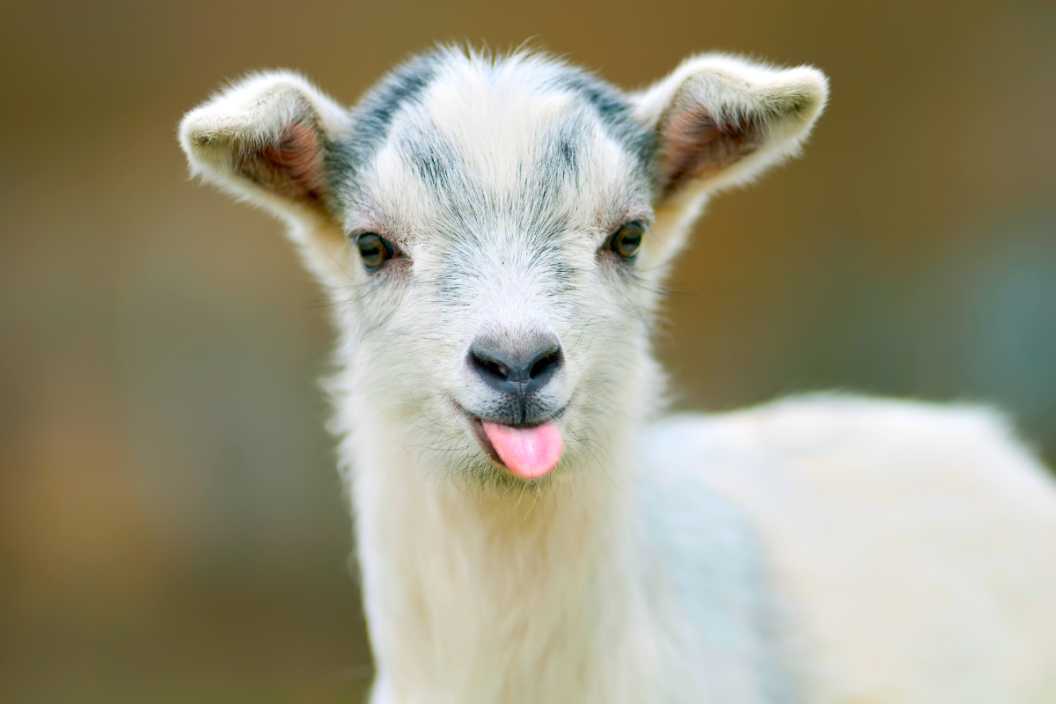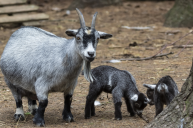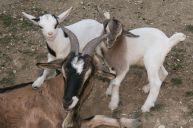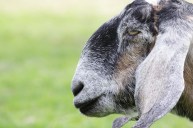From Alpine to Boer, meet nine different goat breeds!
There are over 300 different breeds of goat from all over the world, including South Africa, Asia, and North America. Goat breeds can include angora goats (mohair), kiko goats, pygora goats, toggenburg goats, oberhasli goats, and even cashmere goats. Each goat breed has its own breed standards and growth rate. Domestic goats are bred and kept for many different uses, including as pets, for milk production, and as meat goat breeds. Meet nine of the most popular and adaptable goat breeds!
1. Alpine Goats
https://www.instagram.com/p/BvPgsD2gdhw/
Although French-Alpines originated in the Swiss Alps, they were bred to be bigger in France. They range in size from small to medium, with does (females) weighing approximately 135 pounds and bucks (intact males) reaching at least 160 pounds. Top goats may produce up to two liters of milk per day, and their milk is frequently used to make cream, butter, cheese, and soap.
2. LaMancha Goats
https://www.instagram.com/p/CJLxsFSJJan/
LaMancha goats are distinguished by their unusually small ear pinnae (the visible piece of the outer ear). LaManchas are excellent milkers, providing milk with high protein and butterfat content. They may be milked for two years without being freshened. They are easygoing, cooperative, and robust. The LaMancha was developed in Oregon, although its origins may be traced back to Spain.
3. Pygmy Goats
https://www.instagram.com/p/CQMG0N8nHFo/
Pygmy goats were developed in the United Kingdom from a cross of dwarf goats. The adult pygmy goat is around the size of a medium-sized dog, making these little goats ideal for acreages. While this breed does give milk, it is often bred as a pet and for display.
4. Nigerian Dwarf Goats
https://www.instagram.com/p/CQYcEjJjoH5/
The Nigerian Dwarf has the appearance of a tiny Alpine. Between 1930 and 1960, a group of West African Dwarfs was brought to the United States from Africa. Originally, it was primarily seen in zoos, but it subsequently evolved into a tamed exhibition animal and a milking goat. It is said to be sociable and pleasant, and it may be any color or design.
5. Spanish Goat
https://www.instagram.com/p/CCZsAuwlGq6/
In the 1500s, the Spanish goat traveled from Spain to the United States via Mexico. It is a meat and brush-clearing goat breed that is common in the US. Crossbreeding has put the purebred Spanish goat population in jeopardy today. In the 1980s, Boer goats surpassed Spanish goats for meat production. This increases the genetic and historical significance of the Spanish goat breeds that emerged in the New World.
6. Tennessee Fainting Goat (Myotonic Goat)
https://www.instagram.com/p/CGisBYPnAAc/
Myotonic is named after the genetic disease myotonia congenita, which causes it to stiffen and "faint" when shocked or scared. The tightening of the muscles can lead the goats to freeze in place for 10 to 20 seconds and, in extreme cases, to topple over. Although they are classed as meat goats, many landowners keep them as pets due to their gentle demeanor and amusing behaviors.
7. Saanen Goat
https://www.instagram.com/p/CCetnVEHEO1/
The Saanen goat is the biggest dairy goat breed, second only to Alpine goats in milk output. It originated in Switzerland and is currently available in over 80 countries globally. The average height for does is 32 inches, while the average height for bucks is 37 inches, and they are heavy milk producers. They may or may not have horns or a tassel (also known as a wattle).
8. Nubian Goat
https://www.instagram.com/p/CL8IDroDZ8i/
Outside of North America, the Nubian, sometimes known as the Anglo-Nubian, is a big, robust, and rather loud dairy goat. It is distinguished by its long, floppy, dog-like "lop" ears, which can be any color or pattern. This breed can flourish in hotter climes than other dairy goats due to its Middle Eastern origin. This goat is a popular pet, even though it is grown for meat and milk.
9. Boer Goat
https://www.instagram.com/p/CQeXaCgnrgT/
Millions of Boer goats are farmed in South Africa, Australia, New Zealand, the United States, and Canada. Boer does are known for kidding as many as two times every three years, typically producing twins and, on occasion, triplets. Adult males can weigh 160 kg (350 pounds), while females can weigh up to 110 kg (about 250 pounds).
What's your favorite goat breed? Tell us on the Wide Open Pets Facebook page!




